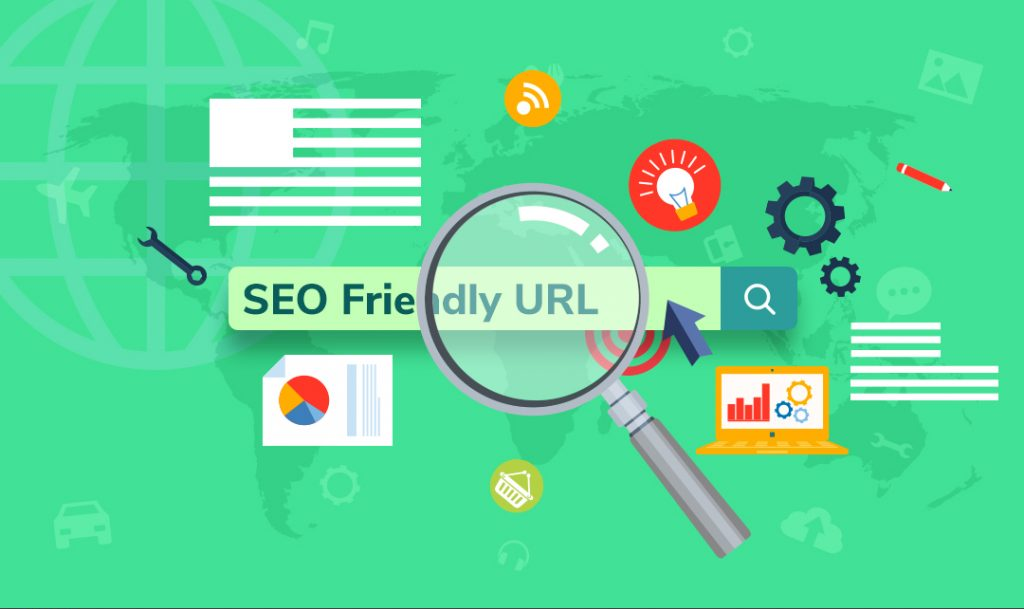We will discuss URL best practices in this article. You will learn what URLs are, how to structure categories, and how to improve click-through rates.
Hire AAM Consultants for link building and SEO Services
What is a URL?
URL stands for Uniform Resource Locator and serves as a location for a web document. By typing a URL in the address bar of your browser, you will be directed to the desired webpage.
URLs can be broken down into multiple parts when you examine them closely. Protocol, domain name, top-level domain (TLD), and path.
- In the web, protocols are used to transfer information, and the most common are HTTP (hypertext transfer protocol) and HTTPS (HTTP secure).
- The domain name is the name of the website, such as eBay, Expedia, etc.
- A top-level domain (TLD) is the text following the “dot” in an URL, such as .com, .gov, or .org. In a top-level domain, the domain is classified as a type (educational, commercial, governmental) or based on a location, such as .uk, .au, .ru, etc. A website’s backlink profile can benefit from authoritative TLDs like .gov and .edu.
- After the TLD, the path indicates the place on the website where a page can be found (typically a subfolder, category, or landing page).
Parameters for URLs
An URL parameter is an element that can be used to filter or sort content on a website. A question mark (?) and an equal sign (=) are used to identify them.
Common uses for URL parameters include:
- Sorting gallery pages
- Ecommerce: Sorting items on product pages
- A website’s internal search results
- Campaign tracking using UTMs
Managing URL Parameters: The Basics
There are cases in which multiple URLs with different parameters could lead to duplicate content. The URL includes parameters that limit the number of results and a session ID that allows the same content to be displayed to all users. You can instruct Google which parameters to crawl your website and which to ignore via the URL parameters tool if this is the case for your website.
Avoid Crawling URL Parameters by using site audit tools from outsourced services in order to avoid auditing specific URL parameters on your site that you don’t want to be crawled. This will save your account some crawl budget, as well as preventing duplicate content issues associated with your URL parameters.
URLs in SERPs
In search engine results, URLs appear below the title and above the description. To increase click-throughs, you should keep your URLs clean and readable. Visitors to a website might find longer, unclear URLs distracting and unattractive, and may abandon the site. All of your inbound links are stored in URLs, which are crawled by search engines to figure out which of your pages are most important.
The Best URL Structure for Search Engine Optimization:
SEO URLs can be improved in a number of ways. In most cases, it is best to think of your website as a whole when creating URLs. You will eventually be able to choose your URLs based on the structure of your folders and categories.
Category planning based on searches
Using your keywords in the URL name will make your URLs more visible to searchers. Your website’s categories should be the subject of important questions you ask yourself. Your criteria should be based on the following questions:
- Is there a correlation between them and the products/services of your business?
- What do they have to do with popular searches?
- When searching for the services of your competitors, what terms are people using?
In order to structure your categories and URLs appropriately, you need to know how people search for your services.
Keep it simple
URLs should be as simple as possible. Starting with simple categories, your site moves on to more detailed pages. Simply written URLs tend to be shorter and easier to read, which in turn leads to less confusion. You may be able to read the URL aloud if you are able to read it quickly and understand it.
1-2 target keywords and 1-2 folders are recommended for SEO-friendly URLs. Anything more may be hard to read or confusing. It is, therefore, recommended that you should name folders descriptively and avoid the use of “dynamic URLs” that contain long numbers and strings. The easier it is to read, the better.
SEO-friendly URLs should:
- Include your keyword
- Use relevant categories/subfolders
- Contain around 3 to 5 words if possible
- Be descriptive and meaningful
- Be easy to read
This short should help you to understand what URL optimization is and how you can make sure your URLs are optimized and successful.




